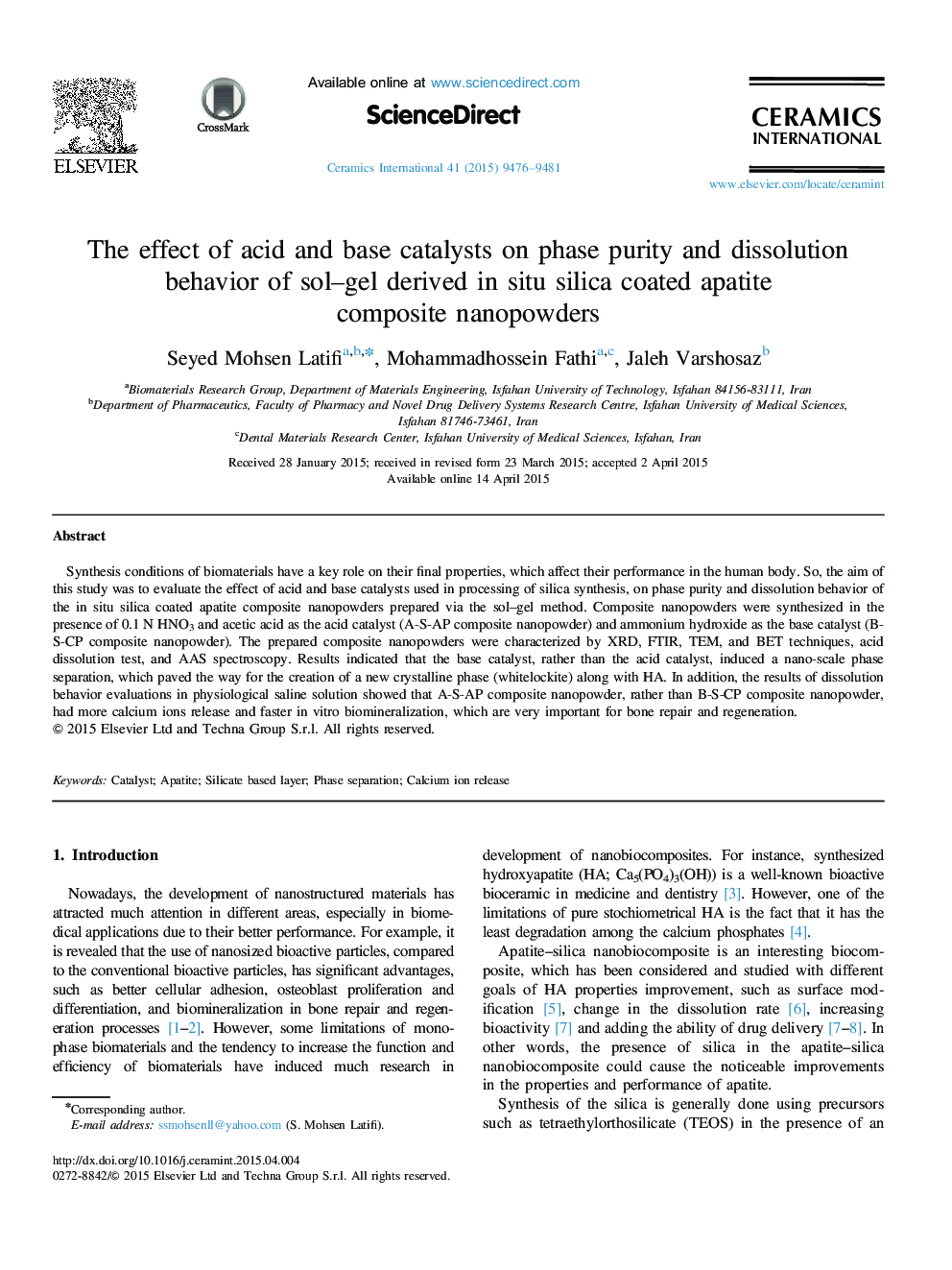| کد مقاله | کد نشریه | سال انتشار | مقاله انگلیسی | نسخه تمام متن |
|---|---|---|---|---|
| 1460222 | 989602 | 2015 | 6 صفحه PDF | دانلود رایگان |
Synthesis conditions of biomaterials have a key role on their final properties, which affect their performance in the human body. So, the aim of this study was to evaluate the effect of acid and base catalysts used in processing of silica synthesis, on phase purity and dissolution behavior of the in situ silica coated apatite composite nanopowders prepared via the sol–gel method. Composite nanopowders were synthesized in the presence of 0.1 N HNO3 and acetic acid as the acid catalyst (A-S-AP composite nanopowder) and ammonium hydroxide as the base catalyst (B-S-CP composite nanopowder). The prepared composite nanopowders were characterized by XRD, FTIR, TEM, and BET techniques, acid dissolution test, and AAS spectroscopy. Results indicated that the base catalyst, rather than the acid catalyst, induced a nano-scale phase separation, which paved the way for the creation of a new crystalline phase (whitelockite) along with HA. In addition, the results of dissolution behavior evaluations in physiological saline solution showed that A-S-AP composite nanopowder, rather than B-S-CP composite nanopowder, had more calcium ions release and faster in vitro biomineralization, which are very important for bone repair and regeneration.
Journal: Ceramics International - Volume 41, Issue 8, September 2015, Pages 9476–9481
